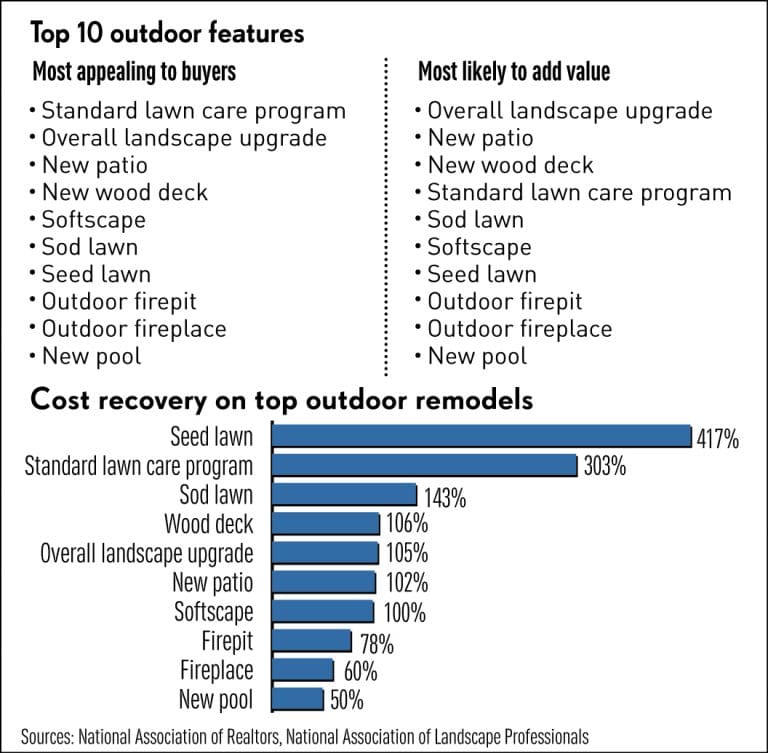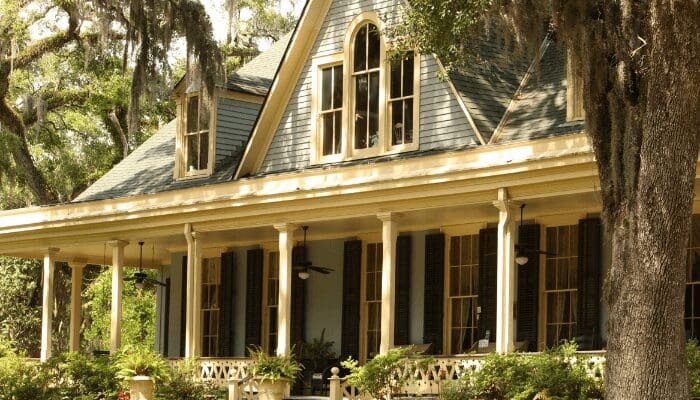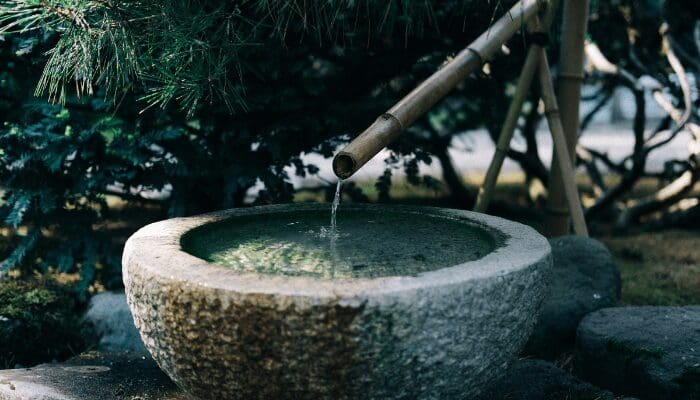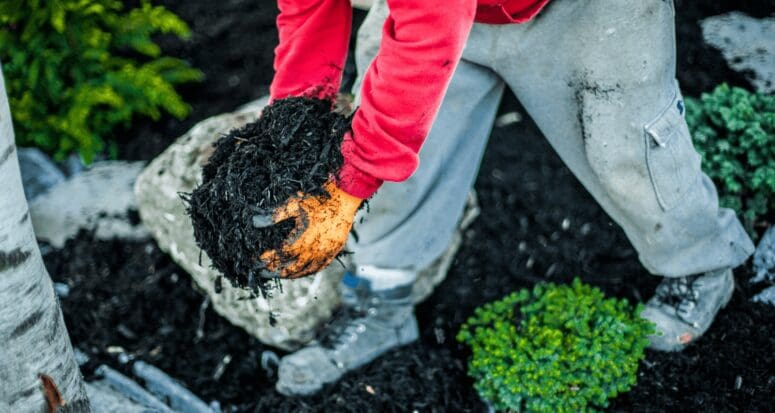5 Budget-Friendly Landscaping Projects to Improve Your Curb Appeal
- Published on
- 5-7 minute read
-
 Christine Bartsch Contributing AuthorClose
Christine Bartsch Contributing AuthorClose Christine Bartsch Contributing Author
Christine Bartsch Contributing AuthorFormer art and design instructor Christine Bartsch holds an MFA in creative writing from Spalding University. Launching her writing career in 2007, Christine has crafted interior design content for companies including USA Today and Houzz.
Like putting a beautiful cover on a book or neatly wrapping a gift in shiny paper, giving your home great curb appeal is all about enticing someone to look further.
But you can repair and refresh the outside of your house and still watch buyers pass on without a second glance if your lawn is dying, overgrown or just plain ugly.
The magic word here is landscaping, and without it, the effort you put into tasks like painting, pressure washing, fixing your outdoor lighting and repairing the garage door will likely go unnoticed.
According to landscape economist John Harris, improved landscaping can reduce the number of days on market by an average of 10 to 15%. (Fewer days on market usually means more money in your pocket.)
And a Virginia Tech study discovered that better landscaping may increase your home’s value by 10 to 12%. In fact, an overall landscape upgrade is at the top of the list for outdoor improvements most likely to add value and appeal to buyers.

Yet when you’re weeks away from selling, you don’t always have the time or money for a full front lawn overhaul. Luckily, these five affordable landscaping ideas and products can transform your untamed jungle into an inviting oasis — and no, we’re not talking about plastic flamingos.
Here’s how to improve your curb appeal with landscaping tastefully (and without going broke.)
Tip 1: Don’t Lose Your House Behind Leaves
Mature trees and bushes can add shade and privacy to your yard and have the potential to boost your property value—up to 7 to 19%, according to some experts. However, that’s only true if they are healthy, well-maintained and planted wisely.
In some cases, overgrown greenery does nothing more than hide your home from potential buyers. Plants in the wrong places can create an unwelcoming atmosphere, make your home appear smaller than it is, or send the message that your house has hidden flaws lurking underneath the overgrowth.

Instead, you want your home to shine proudly in all its glory.
That means if massive hedges and trees dominate your lawn, you’ll need to trim or remove them entirely before you list your home.
It costs an average of $200 to $600 to hire a basic yard cleanup service, which includes pruning, flower-bed maintenance, weeding and debris removal.
If you want tackle trimming hedges, bushes and shrubs on your own to save some dough, check out this great guide from GreenPal, a startup known as being the “Uber of lawn care” that’s grown to 25 markets since 2012, for tips and tricks on selecting a trimmer, how much you can expect to spend, how to shape your hedges and, most importantly, safety concerns. Electric trimmers can be dangerous, so take every precaution when using one, and thoroughly read the manual for the equipment before you get to work.
The cost of removing a tree can range from a few hundred dollars into the thousands. This depends on a number of factors, including the tree’s size and location.

Tip 2: Make Your Walkway a Grand Entrance
The split second when buyers stroll up the path to your front door can make or break your home sale. Cracked pavers, untidy edging, or unchecked weed growth bursting at the seams are all signals that yours is not a well-maintained home.
Repairing or replacing your walkways are somewhat pricey curb appeal projects; it costs a national average of $2,476 for a professional contractor to install a concrete walkway.

That price only increases if you intend to replace your front walk. After paying several hundred dollars or more to remove the existing concrete, you’ll need to pay to install the new walkway (a brick paver walkway averages around $1,500). Also, factor in a few more hundred dollars to cover landscaping costs.
Luckily, paths in decent condition can be spruced up for a whole lot less. If yours is unbroken but simply uneven, a contractor can raise the sunken slabs for just a few hundred dollars.
Once it’s even, you can transform your boring passage with a stamped concrete overlay to give it a brick, slate or natural stone look. This project will run you an average of $3 to $7 per square foot for basic overlays, and up to $15 or more for higher end overlays that include textures or embeds.
Another inexpensive way to amp up your walkway’s appeal is with edging. The easiest way to get this crisp, clean definition is by digging a narrow trench along the length along your pathway. Known as spade-cut edging, you can DIY this project by renting a lawn edger for around $50 for a day.
Installing hardscape edging will make the walk to your front door even more inviting. Whether you line your sidewalk with brick, wood or stone edging, the technique adds definition and makes the whole yard look well-manicured. The cost for a hardscape edging project is approximately $400, although this varies depending on material costs and the length of the driveway.
With or without edging, you can achieve a grand entrance feel by lining your walkway with potted plants. This creates a natural flow and draws your buyers’ eyes up toward the front door, inviting them to enter—all for the price of a few flowers and containers. For dramatic effect, use a staircase arrangement with identical pots that increase in size as they get closer to the door.
Tip 3: Boost Gardens with Tall Planters
While you’re out getting flower pots to revive your front walk, grab a few extra. — they’ll come in handy when you’re looking to add oomph to lackluster flower beds.
Seasonal flower beds take time and lots of help from mother nature to fill in and bloom. Container gardens installed within the flower bed, on the other hand, allow you to achieve a full, lush look much faster, making up for the time you don’t have if you’re looking to list within weeks.
The beauty of adding pots to gardens is their versatility. You can vary them by height, size, and style to create the kind of ambiance you desire. For example, a vignette of varicolored wildflowers planted in pots of contrasting shades and styles creates an eclectic, homespun charm. Or you can give the same space a more modern aesthetic with a series of sleek, geometric planters.

Revamping your flower beds with container gardens will only cost you in time and materials, including the plants, potting soil and planters. Depending on your selections, this project will run you anywhere from under $100 to several hundred dollars.
Just keep in mind that you won’t be taking these flower bed-installed container gardens with you when you move, so there’s no need to spend big bucks on fancy planters. For example, if you’re going for a quaint cottage vibe, you can plant in almost any found object, from old boots to tea kettles.
Save more money by giving new life to your old outdoor pots or planters. Revive cracked or chipped pots by filling the damaged areas with an all-purpose joint compound. Once it’s dry, sand it down and restore the entire pots with acrylic or spray paint.
Tip 4: Water Features Make a Splash
Adding a water feature to improve your curb appeal not only adds height and visual interest, it also brings an aura of relaxed luxury. The serene bubbling from a waterfall or fountain is also helpful in dampening the noise from a busy street or nearby highway.

From serene ponds you can fill with water lilies and Koi fish, to formal fountains, water features come in a wide range of styles to accentuate any aesthetic. Pricing out this project depends on size, style and most importantly, your water source.
The value of adding a water feature to your home can be hard to estimate. But think of it like the art you use to decorate the interior of your home. The right feature can give your yard a custom visual effect that contributes to the overall appeal of your landscaping to buyers.
The sound of flowing water can also mitigate noise, so that’s something to think about if you live on a busy road.
Professionally-installed water features hook into your home’s waterline so there’s a constant supply. This keeps fresh water circulating which slows algae growth and reduces the need for cleaning. It costs a national average of around $2,500 to have a fountain or waterfall installed by a professional.
There are less-expensive ways to increase your curb appeal with a water feature, especially if you’re installing it near an exterior outlet. Most home improvement stores sell decorative fountains that you can install yourself at a cost of a few hundred dollars. Or you can create your own with a DIY fountain kit.
While they are less expensive, there are downsides to these free-standing fountains. If yours isn’t attached to your home’s waterline, you’ll need to periodically refill it with your garden hose. Since these fountains recirculate the same water, they are also more prone to algae growth and will need more frequent cleaning out.
Tip 5: Improve a Barren Lawn with Rocks
Patchy lawns lead buyers to ask for a landscaping discount off of your asking price. If your schedule doesn’t include time to seed your existing grass or install new sod, a rock garden may just be the right solution.

For mostly-healthy yards that have minimal bare patches— maybe you’re dealing with a couple of troubles spots under large shady trees—simply use landscape edging to define a border to separate the area from the healthy grass. Fill in the area with mulch or gravel, then add a few decorative boulders and add seating to transform the bad patch into a cozy nook.
The cost of bringing landscaping boulders into your yard starts with the cost of the rock type, as well as size and number. Rock distributors price their boulders by the pound, a price that also varies depending upon how common the stone type is in your region. For larger boulders, it’s best to let a professional landscaper handle the delivery and installation at a cost of around $200.
Lost cause lawns that are more dirt patch than grass require a more drastic approach, like covering the entire lawn in landscaping rocks. Also known as desert landscaping, this landscaping design style is common in states where excessive heat makes grass lawns impractical.
Far from looking barren, these landscapes create visual interest with features like dry streambeds and drought-resistant plants, like the cold-hearty hen and chick. Apart from the price of the landscape rocks, it costs an average of $232 to have the rock delivered and spread.
Curb Appeal on a Budget: Tasteful, Clean Looks Buyers Love
Whether your front yard needs minor tweaks to look its best or a complete overhaul, these tips will help you achieve the kind of curb appeal that makes buyers fall for your home before they even step inside.
When in doubt, go for a manicured look that highlights the care you’ve applied your home’s exterior and beyond. Keep expenses to a minimum by focusing on cleaning up overgrowth, creating a grand entrance and adding a few accents like creative flower arrangements.
Stick to your budget and don’t sweat spending a couple hundred bucks here and there — remember that landscaping improvements consistently add value.
Article Image Source: (Valmedia/ Shutterstock)
